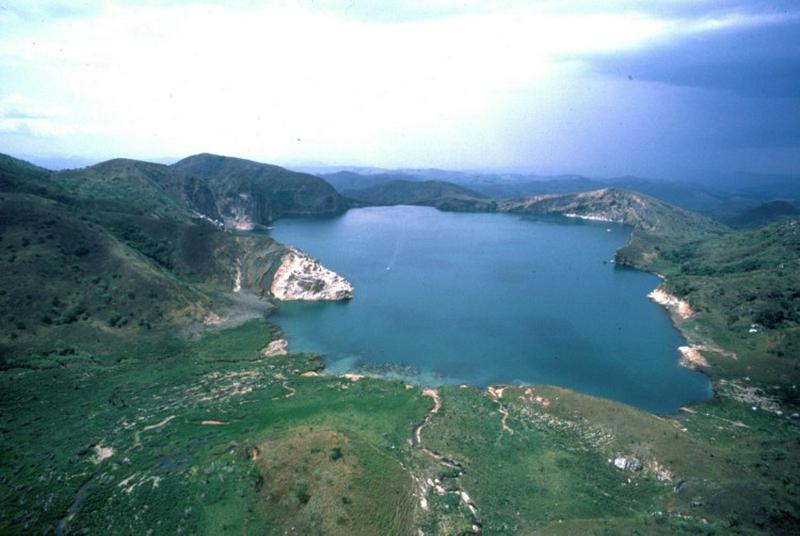The Exploding Lakes Of Cameroon
By | September 27, 2019

Lakes are usually associated with serenity. The idea of a cabin by the lake is how some people dream of retiring. However, the dream would quickly become a nightmare if that once serene lake were to suddenly explode, killing everything and everyone around it. That might sound like something from a bad science fiction movie, but it is exactly what happened, not once but twice, during the 1980s, courtesy of a natural phenomenon known as a limnic eruption.
Limnic Eruptions
During a limnic eruption, carbon dioxide from the bottom of the lake suddenly erupts, emitting a cloud of toxic gas which suffocates anyone unfortunate enough to be in its path and spawning a tsunami which flattens surrounding vegetation. These eruptions occur in lakes with an abundance of carbon dioxide. Water saturated by the carbon dioxide is trapped at the bottom of the lake due to hydrostatic pressure. A significant disruption of the water in the lake causes the saturated water to be pushed upwards where the pressure is much lower. This causes the carbon dioxide to depressurize and start to bubble, just like a bottle of soda that has been shaken and then opened. And, just like the soda bottle, the lake overflows and the carbon dioxide is released into the air.

Lake Monoun
On August 15, 1984, around 10:30 at night, Lake Monoun, located in a volcanic field in West Province, Cameroon, experienced one of these massive explosions. The resulting gas cloud suffocated thirty-seven people. Those who survived did so by staying above the cloud. Such was the case with several victims whose truck had broken down during the eruption. Most of the passengers were killed but the two who climbed on top of the truck survived. This is because carbon dioxide is heavier than the atmosphere, causing the cloud to settle near the ground.

Lake Nyos
Two years after the Lake Monoun eruption, the phenomenon happened again in yet another lake in Cameroon. It was August 21, 1986, and this time the exploding lake was Lake Nyos and it exploded with a lot more force, sending over a million tons of carbon dioxide into the air. The gas cloud soars upwards before descending to sweep across the ground, covering an area of 25 kilometers around the lake. The deadly cloud rolled down the mountains into the village where it seeped into the homes of the unsuspecting residents. This time the death toll exceeded 1,700 people and 3,000 animals. Afterward, the waters of Lake Nyos turned deep red as a result of iron-rich water rising from the bottom of the lake and the water level was reduced by nearly a meter.

Possible Triggers
While scientists know the eruptions are caused by the displacement of water saturated with carbon dioxide, there is some debate as to what causes the displacement. Because both lakes are located on a volcanic field, it is possible that the limnic eruptions were triggered by a small-scale volcanic eruption beneath the lakes. Other possible triggers include landslides and unusually heavy rainfall. Anything with the potential to upset the stratification of the lake at its depths could start the eruption. In an effort to reduce the chances of future eruption, a vent pipe was installed at Lake Nyos which releases the carbon dioxide at a controlled rate.

Lake Kivu
Limnic eruptions only occur in lakes with a significant buildup of carbon dioxide trapped at the bottom. Lakes where the layers regularly intermingle or that have no steady supply of carbon dioxide are not at risk. There are only three lakes in the world known to meet the criteria: Lake Monoun, Lake Nyos, and Lake Kivu. Lake Kivu is located on the border of the Democratic Republic of Congo and covers an area of 1,680 square miles, vastly larger than Lake Nyos which only covers about one square mile. There are an estimated 10.5 billion cubic feet of carbon dioxide lurking in its depths. A limnic eruption here would mean certain death for the approximately two million people living in the area. However, the lake is now being used as a source of energy with the dangerous gases being pumped out in a controlled manner.

